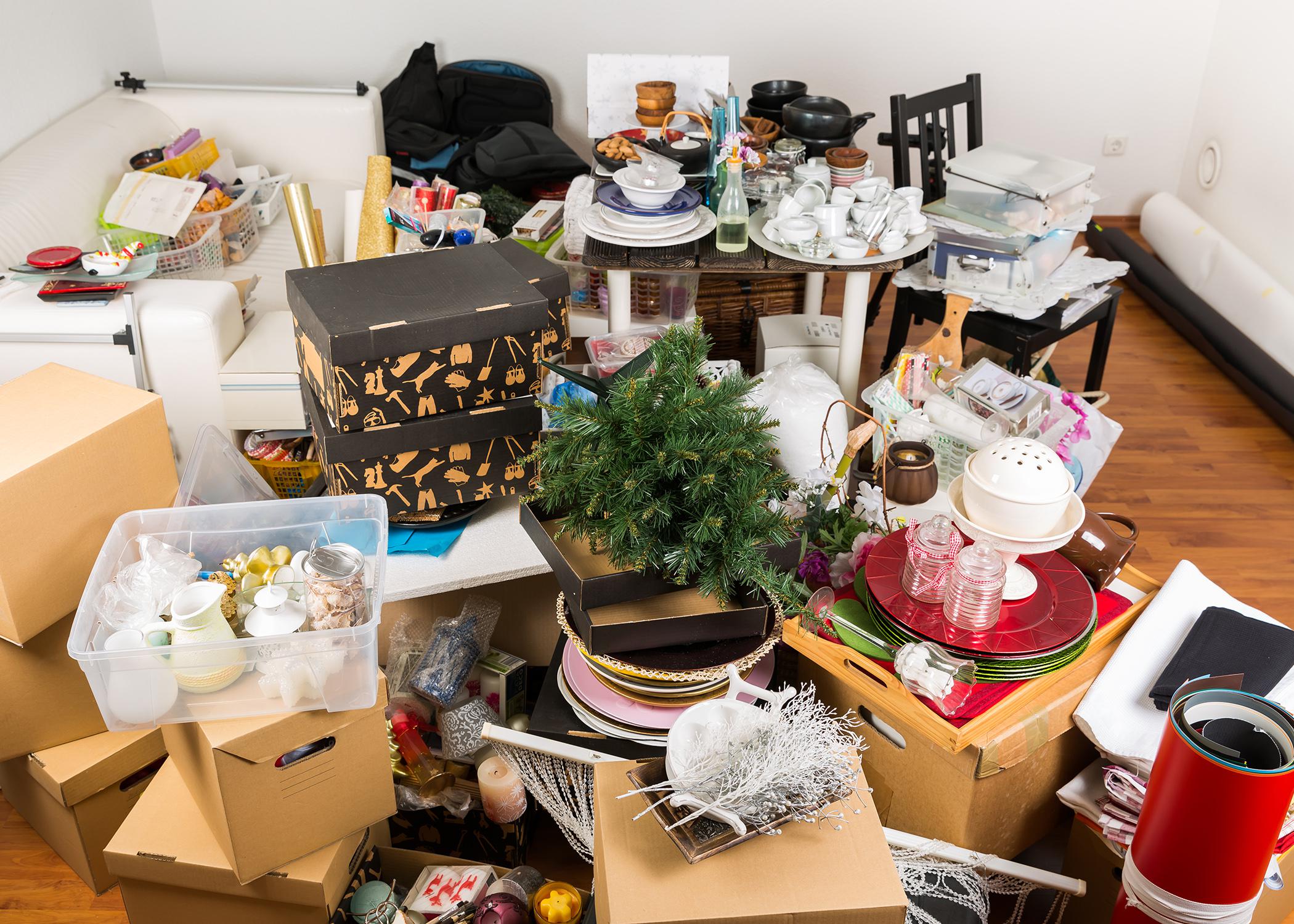Program helps clients unload sentimental clutter
RAYMOND, Miss. -- Spring’s arrival motivates many people to refresh the spaces where they spend their time.
This refresh should include removing clutter, which can affect quality of life and lead to serious health concerns if small amounts turn into larger amounts, said Jasmine Harris-Speight, an educator with the Mississippi State University Extension Service.
“Clutter has a way of sneaking in without you even realizing it,” said Harris-Speight. “Not getting a handle on clutter can turn into unhealthy behaviors associated with hoarding.”
Harris-Speight and Mary Dozier, a clinical psychologist in the MSU Department of Psychology, worked with colleagues at the University of Georgia to develop the multi-state program “Right-Sizing: Dealing with Sentimental Clutter.” The program helps clients identify sentimental clutter and develop an action plan to sort and part with it.
Excessive amounts of clutter can make it hard to keep a home clean and tidy, which can trigger allergies and asthma, increase the risk of injury due to tripping and falling over items, lead to pest infestation and cause mental health complications.
If people find themselves unable to use the rooms of their homes as they would like, it is time to begin removing clutter, said Dozier, who specializes in the assessment and treatment of hoarding in late life.
“Often the amount of clutter that was functional in early and middle adulthood can become dysfunctional in late life when adults are no longer able to physically move around as easily,” she said.
While people may find it easy to get rid of ordinary clutter, including clothes that no longer fit or broken toys, deciding how to handle sentimental clutter can be more challenging, particularly for older adults.
“Letting go of clutter can be difficult for a variety of reasons, including increased difficulty with making decisions in general as we get older,” Dozier said. “When we discard clutter, we must make a series of decisions about the item and its current or future utility.
“We have to ask ourselves questions like, ‘Will I read this book again? Is this painting worth taking up the space if it’s in the attic? Do I actually like this sweater or am I just keeping it because it was a present?’ Age-related changes in our cognitive abilities make this harder to do, especially quickly.”
Parting with sentimental clutter can also be difficult because of its emotional value, so ensure it is the right time to part with items. Harris-Speight recommends using the following steps when sorting sentimental clutter:
- Determine the space you want to allocate for these items.
- Create that space in your home.
- Select representatives. A simple method is to choose key items from collections and retain one or two favorites instead of the entire set.
- Execute your plan.
Step three is crucial in helping people reclaim their spaces, Dozier said.
“I recommend that folks think about how many sentimental objects overall they would like to have from a particular set or collection of items that remind them of a loved one or special time in their lives,” Dozier said.
“Setting a number that you want to keep can make it easier when you do the actual sorting because you are thinking less of whether you like each particular item. Instead, you are thinking about whether you like it better than another object you would want to keep,” she said.
When choosing which items to keep and which to discard, it helps to have a specific goal in mind for the space. Dozier also urges people to not focus on whether they will regret discarding items.
“Having goals helps keep focus on the reason for decluttering,” she said. “Common examples of goals include being able to have grandkids stay the night or have friends over for a dinner party.
“I never promise that folks won’t have regrets later -- regret is a natural part of life. People should ask themselves whether they would be willing to risk having regrets in order to reclaim the space in their home.”
Items people chose not to keep can be given to other family members, donated or sold. Check social media platforms for groups that may be in search of the items.
Although displaying sentimental items that are kept is ideal, Harris-Speight said that might be challenging.
“Consider scanning and storing old photos on a cloud device or in a digital picture frame,” she said. “Investigate options to repurpose or recycle your items. For instance, clothing items can be transformed into new creations, like quilts or pillows. This helps serve a purpose while preserving the sentimental value.”
Harris-Speight acknowledges the process can be stressful and should not be taken lightly.
“Don’t be afraid to ask for help if you need emotional support,” she said.
Family, friends or professional organizers can help those who need a small refresh on their spaces. However, Dozier recommends finding a mental health clinician for conditions associated with hoarding. Therapists can be located on the International OCD Foundation website at https://iocdf.org.
The “Right-Sizing: Dealing with Sentimental Clutter” program can be requested through the local Extension office.
People who want to declutter also may qualify for two separate studies taking place in the MSU Department of Psychology. Dozier is running a clinical trial to compare two behavioral in-home interventions for older adults with high amounts of clutter. Individuals must be 60 or older and live within a one-hour drive of Starkville. The study is funded by the National Institutes of Health. For more information, contact Dozier at 662-325-0523.
Clinical psychologist and assistant professor Jennifer Krafft is conducting an online study to test two prototype mobile apps that use journaling to help increase the motivation to declutter. For more information, visit the Mindfulness and Acceptance Processes Lab website at https://maplab.squarespace.com/writing-app.




